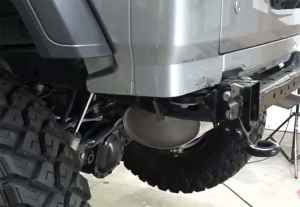Navigating the legality of driving a vehicle without a bumper involves understanding state laws and recognizing the potential safety hazards. Bumpers are essential components designed to protect the front and rear ends of vehicles, absorbing impacts during collisions and housing vital safety features such as sensors and lights. The question of whether it is illegal to drive without a bumper, front bumper of a car, or a rear bumper varies across states, making it crucial to be aware of local regulations to avoid legal issues and ensure road safety.
State Laws and Regulations on Bumper Requirements
Across the United States, the requirement to have front and rear bumpers is largely mandated by state law. These regulations are enforced to ensure vehicles retain crucial safety features that protect both the car and its occupants during collisions. While certain states like Alabama and Arizona may not impose strict bumper requirements, others like California and New York strictly require both front and rear bumpers. The absence of a bumper can lead to severe penalties including fines and safety citations, indicating the importance of complying with these regulations.
The Risk to Drive Around Without a Bumper
Driving without a bumper not only exposes your vehicle to increased damage in the event of an accident but also elevates the risk of severe injuries to pedestrians and other road users. Bumpers are designed to 
State-by-State Bumper Requirements and Penalties
In many states, driving without a front or rear bumper is not just unsafe – it’s illegal. These laws are enforced to maintain a safe operating condition for all vehicles on public roads. Here is a list of typical requirements and penalties for driving without a bumper in various states:
-
California: Mandatory front and rear bumpers; fines up to $200.
-
Florida: Required bumpers; fines ranging from $125.50 to $151.
-
New York: Compulsory bumper requirements; penalties can exceed $200.
-
Ohio: Vehicles must retain factory-designed bumpers; fines around $200.
-
Texas: No strict bumper requirements, but safety regulations still apply.
Lack of Bumpers Strictly Prohibited in Many Areas
In the majority of densely populated areas, driving without a bumper is not only risky but also legally prohibited. Regulations are enforced rigorously to maintain a uniform safety standard across all vehicles on the road. For enthusiasts looking to enhance their vehicle’s functionality or aesthetic, especially for off-road adventures, consider exploring the Best Front and Rear Jeep Bumpers. Detailed insights and recommendations are available in another one of our articles, which can guide you in choosing the right bumpers for durability and performance. Driving a vehicle without a bumper can lead to significant fines and even vehicle impoundment in some jurisdictions, depending on local law enforcement and the specific state regulations involved.
Insurance Implications of Lacking a Bumper
Driving without a bumper can also have serious implications for your car insurance coverage and rates. Many insurance companies view the absence of a bumper as negligence in maintaining vehicle safety standards, which can lead to denied claims in the event of an accident. This is because bumpers play a crucial role in mitigating damage during collisions. Without a properly functioning bumper, the extent of damage from even a minor fender-bender could be much more severe, resulting in higher repair costs for the insurance company. As a result, some insurers might increase your premiums significantly or decide to cancel your policy altogether if they deem your vehicle unsafe for the road due to the missing bumper. It’s important to disclose any modifications or missing parts to your insurer to avoid issues with claims down the line.
The Bottom Line
While the regulations can vary, the consensus is clear: driving without a bumper is both risky and, in many cases, illegal. It’s crucial for vehicle owners to adhere to their state’s vehicle regulations not just to avoid fines and legal trouble, but to ensure their own safety and that of others on the road. Make sure your vehicle complies with these laws and maintains all necessary safety features to promote road safety and compliance. Ignoring bumper requirements could land you hefty fines, increase your insurance costs, jeopardize your coverage, and most importantly, put you and others at risk in case of an accident.

Add Comment